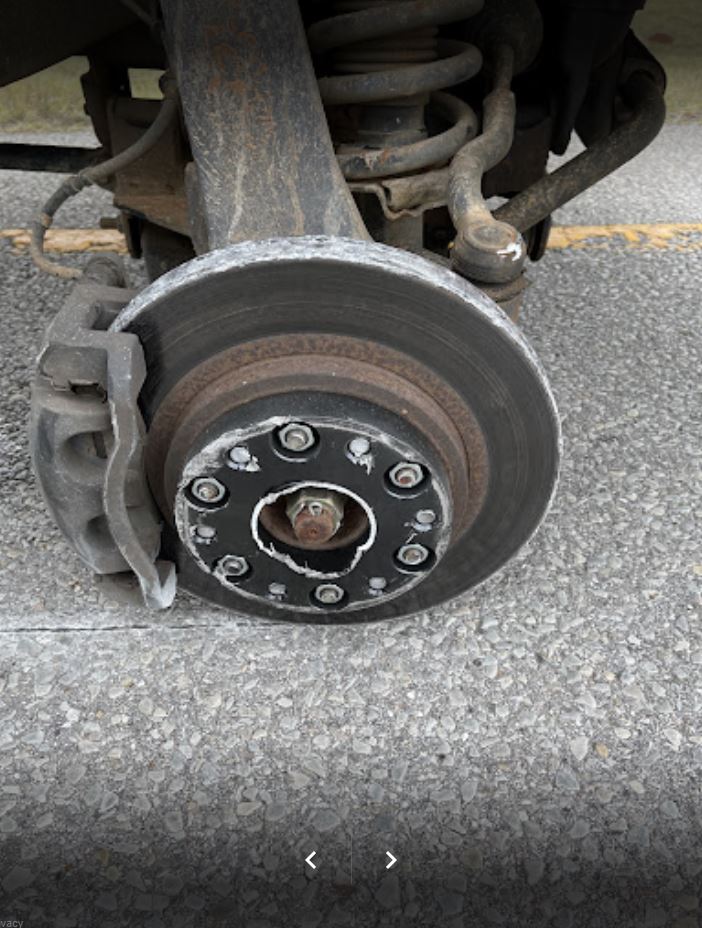Have you ever wondered why wheel spacers sometimes don't perform as expected? It's a question that many car enthusiasts ponder.
Wheel spacers, those seemingly innocuous devices that provide extra clearance between the wheel and the hub, can sometimes fail to deliver the desired results. In this article, we will delve into the reasons behind wheel spacer failures.
Proper installation plays a crucial role in ensuring the success of wheel spacers. However, despite following all the necessary steps during installation, there are common causes that can lead to failure. From material fatigue to incorrect torque specifications, understanding these factors is essential for preventing potential issues.
Recognizing signs of wheel spacer failure is equally important for your safety on the road. Vibrations, and even loose lug nuts can be indicative of a failing spacer. Ignoring these signs could have serious consequences.
To avoid such risks and ensure longevity of your wheel spacers, proper maintenance is key. We will provide you with valuable tips and insights on how to maintain your spacers effectively.
So let's dive deeper into this subject matter and unravel why wheel spacers may fail – knowledge that every car enthusiast should possess!
Importance of Proper Installation
When installing wheel spacers, it's crucial to install and torque them correctly. Proper installation is of utmost importance to prevent failure and ensure optimal vehicle performance.
To begin with, make sure you choose the right size and material for your wheel spacers. They come in various thicknesses, so select one that provides the desired level of offset without compromising safety. Additionally, opt for high-quality aluminum or steel spacers that can withstand the forces exerted on them during operation.
During installation, cleanliness is key. Remove any dirt or debris from both the hub and the wheel to ensure a secure fit. Failure to do so may result in uneven pressure distribution and potential loosening over time.
Once you've cleaned everything thoroughly, carefully align the wheel spacer with the lug studs on your vehicle's hub. Tighten each lug nut gradually and evenly in a star pattern until they're properly torqued down. Avoid over-tightening and the use of power tools as this can lead to excessive stress on both the spacer and studs.
Lastly, remember to regularly inspect your wheel spacers for signs of wear, damage and loosening lug nuts. Any cracks or deformities should be addressed immediately by replacing them with new ones.
By following these precise installation guidelines, you'll minimize the risk of failure and enjoy a smoother ride with perfectly balanced wheels.
Common Causes of Wheel Spacer Failure
One of the most frequent reasons for wheel spacer failure is improper installation, which can result in significant damage and potential safety hazards. When wheel spacers are not installed correctly, they can lead to a variety of issues that compromise their functionality.
One common cause of failure is insufficient or excess torque applied during installation. If the spacers aren't tightened to the recommended specifications, they may become loose over time, leading to vibrations and increased stress on the wheel studs. Excess torque is the main cause of broken or stripped studs.
Another common cause of failure is using low-quality or incompatible materials for the spacers. It's crucial to ensure that the spacers are made from high-quality materials that can withstand the forces exerted on them. Using subpar materials can weaken the structural integrity of the spacers and increase the risk of failure.
Additionally, inadequate maintenance and inspection practices can contribute to spacer failure. Regularly checking for signs of wear and tear, such as cracks or deformation, is essential to identify potential issues before they escalate. Failure to perform routine inspections may result in undetected damage that could lead to catastrophic failures while driving. It’s also important to ensure that the lug nuts are checked periodically to ensure that they remain torqued to the right specification.
Another aspect that causes wheel spacers to fail is failing to check the length of the vehicle’s stock wheel studs and cutting them down if necessary. If the stock wheel studs are too long where they make contact with the back of the wheel when it is installed on the spacer, all of the force is applied to the spacer’s studs only, rather than distributed throughout the spacer. This is the main reason that spacer’s studs fail.
Overall, proper installation procedures, including adequate torque application, using high-quality materials, and regular maintenance checks, are vital for preventing wheel spacer failures. By following these guidelines meticulously, you can enhance safety and prolong the lifespan of your wheel spacers.
Signs of Wheel Spacer Failure
One of the most common signs of wheel spacer failure is vibration. If you feel excessive vibrations in your steering wheel or seat while driving, it could indicate that the spacers aren't properly aligned or secured.
Another sign to watch out for is loose lug nuts. If you notice that the lug nuts are becoming loose more frequently than usual, it may be a sign that the wheel spacers are failing to maintain their position.
Lastly, any unusual noises such as clicking or grinding sounds shouldn't be ignored as they may signal a failing wheel spacer. It's crucial to address these signs promptly by inspecting and possibly replacing the spacers to ensure safe driving conditions.
Safety Risks Associated with Failed Wheel Spacers
Beware of the potential safety risks that can arise from failed wheel spacers. When wheel spacers fail, they can compromise the stability and performance of your vehicle, putting you and others on the road at risk.
Here are three safety risks associated with failed wheel spacers:
- Increased risk of wheel detachment: Failed wheel spacers can cause the wheels to become loose or detached from the vehicle, leading to loss of control while driving.
- Suspension damage: Failed wheel spacers can put excessive stress on the suspension components, resulting in damage to struts, shocks, or even control arms.
- Steering instability: Failed wheel spacers can affect steering responsiveness and stability, making it difficult to control your vehicle accurately.
To ensure your safety on the road, regular inspection and maintenance of your wheel spacers is crucial. If you notice any signs of failure or experience any issues while driving, it's important to address them promptly by consulting a professional mechanic.
Maintenance Tips for Wheel Spacers
Ensure your vehicle's stability and performance remain at their peak by regularly maintaining and inspecting the components responsible for keeping your wheels firmly planted on the road. This includes giving proper attention to your wheel spacers.
These small but crucial components require regular maintenance to prevent failure and ensure optimal performance.
Firstly, it's essential to check the torque of your wheel spacers regularly. Over time, vibrations and road conditions can cause them to loosen. By using a torque wrench, you can tighten them back to the manufacturer's recommended specifications, ensuring they stay securely in place.
Additionally, inspecting your wheel spacers for any signs of wear or damage is vital. Look out for cracks or deformation as these can compromise their structural integrity. If any issues are found during inspection, it's best to replace the affected spacer immediately.
Cleaning is another important aspect of maintenance. Regularly remove dirt, grime, and brake dust buildup from both sides of the spacer using a mild detergent or brake cleaner. Ensure that no foreign particles are lodged between the spacer and wheel hub as these can lead to uneven pressure distribution and potential failures.
By following these maintenance tips, you can enhance the longevity and reliability of your wheel spacers while maximizing their contribution to your vehicle's stability on the road.
Frequently Asked Questions
Are wheel spacers necessary for every vehicle?
Wheel spacers are not necessary for every vehicle. Their use depends on factors like desired wheel offset. Consult with a professional to determine if wheel spacers are appropriate for your specific vehicle.
Can wheel spacers cause damage to the wheel bearings?
Yes, wheel spacers can cause damage to the wheel bearings. The added stress from the increased offset can lead to premature wear and failure of the bearings.
Conclusion
In conclusion, it's crucial to ensure proper installation of wheel spacers to prevent failure. Common causes of failure include inadequate torque, improper alignment, and poor quality materials. Signs of potential failure include vibrations and loose lug nuts. Failed wheel spacers pose significant safety risks, such as loss of control and accidents. Therefore, regular maintenance and inspection are essential.

